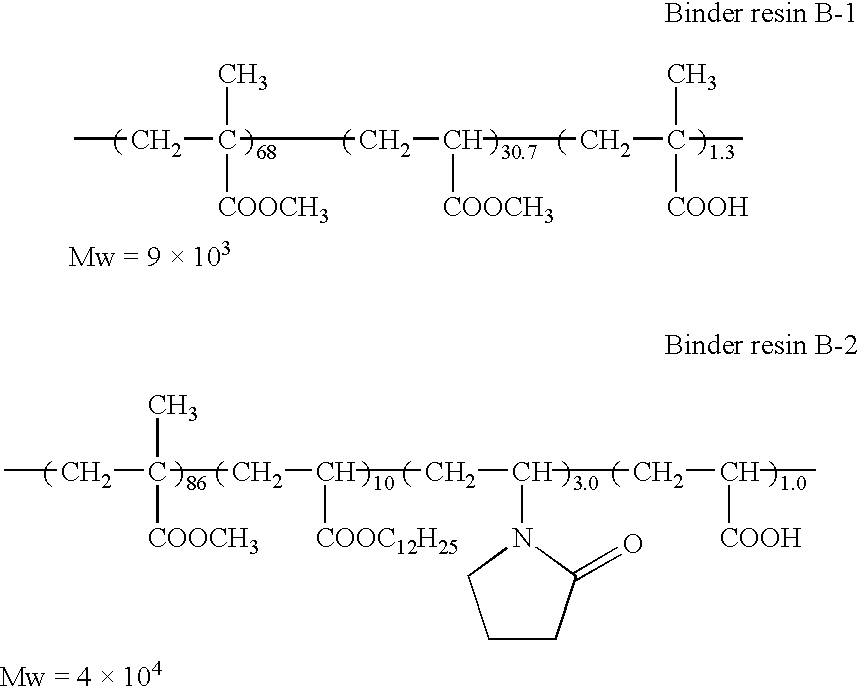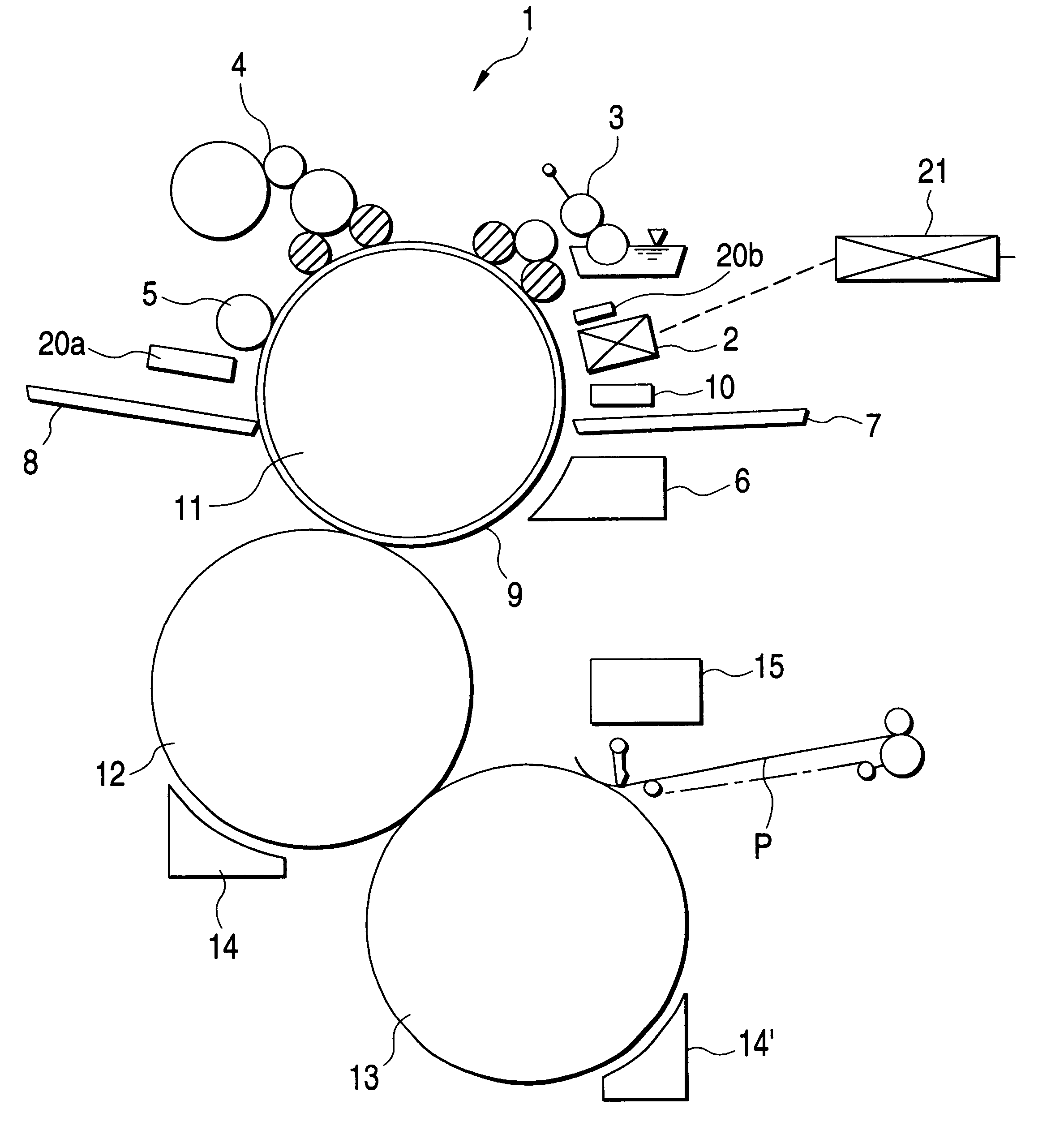Computer-to-cylinder type lithographic printing method and apparatus
a technology of lithographic printing and computer, applied in printing, typewriters, printing plates, etc., can solve the problems of high cost and bulky apparatus, common light and heat modes drawbacks, and plate making methods based on laser exposure suffer environmental drawbacks
- Summary
- Abstract
- Description
- Claims
- Application Information
AI Technical Summary
Benefits of technology
Problems solved by technology
Method used
Image
Examples
manufacturing example 1
Manufacture of Particulate resin PL-1
A mixture composed of 10 g of a polymer dispersant (Q-1) having the following formula, 100 g of vinyl acetate and 384 g of Isopar H in nitrogen atmosphere was heated to 70.degree. C. under stirring. The mixture was then added with 0.8 g of 2,2'-azo-bis (isovaleronitrile) (A.I.V.N.) as polymerization initiator, and allowed to react for 3 hr. In 20 min after the addition of the initiator, the mixture turned turbid and the temperature rose to 88.degree. C. After another addition of 0.5 g of the initiator, the mixture was agitated for 2 hr at 100.degree. C. to remove the remaining vinyl acetate. The reaction product was filtered with a 200 mesh nylon cloth after cooling to give a monodisperse, stable latex of 0.23 .mu.m average particle diameter with a polymerization rate of 90%. The particle diameter was measured with CAPA-500, a product of Horiba Seisakusho Co., Ltd. ##STR1##
Part of the latex was centrifuged at 1.times.10.sup.4 r.p.m. for 60 min, a...
example 2a
The printing part of a commercially available solid inkjet printer (Phaser 340J of Sony Techtronix Co.) was used. As in Example 1A, a plate material comprising a 0.12 mm thick aluminum plate the surface of which had been mechanically grained followed by anodic oxidation was loaded on the printing apparatus. After the dust present on the plate material surface was eliminated with air suction using a pump, the ejecting head in which wax ink was kept in a melted state was moved to a position 2 mm apart from the plate material with the help of an optical gap detecting device. Based on the image data to be printed sent to the image data processing and controlling unit, the 64 channel ejecting head, which was moved along with the rotation of the plate cylinder, recorded an image on the aluminum plate with the ejected wax ink. The image formation utilized a 600 dpi bi-level error diffusion halftoning. Image-recording defects or the like due to dust did not take place at all and the dot are...
example 3a
As the inkjet recording device to be installed on each of the four plate cylinders of a single-side, 4 color printing apparatus (See FIG. 9), a 500 channel piezo inkjet printer XaarJet 500S made by Xaar Co. was used that was operated in a share mode. And an oil-based ink or a UV ink, both being products of Xaar Co. With a gap adjusted with a spacing roller made of Teflon, and by sending the image data to be reproduced to the image data processing and controlling unit, image formation on the aluminum plate loaded on each of the four plate cylinders was simultaneously carried out whereby the cylinder was rotated along with the movement of the 500 channel ejecting head. Such a plate making operation was repeated 500 times for each of the oil-based ink and the UV ink. The image resolution was 360 dpi and tone control was done by changing dot size in 8 levels. The image fixing processing was carried out in the same manner as in Example 1A. Image-recording defects due to dust did not take...
PUM
 Login to View More
Login to View More Abstract
Description
Claims
Application Information
 Login to View More
Login to View More - R&D
- Intellectual Property
- Life Sciences
- Materials
- Tech Scout
- Unparalleled Data Quality
- Higher Quality Content
- 60% Fewer Hallucinations
Browse by: Latest US Patents, China's latest patents, Technical Efficacy Thesaurus, Application Domain, Technology Topic, Popular Technical Reports.
© 2025 PatSnap. All rights reserved.Legal|Privacy policy|Modern Slavery Act Transparency Statement|Sitemap|About US| Contact US: help@patsnap.com



